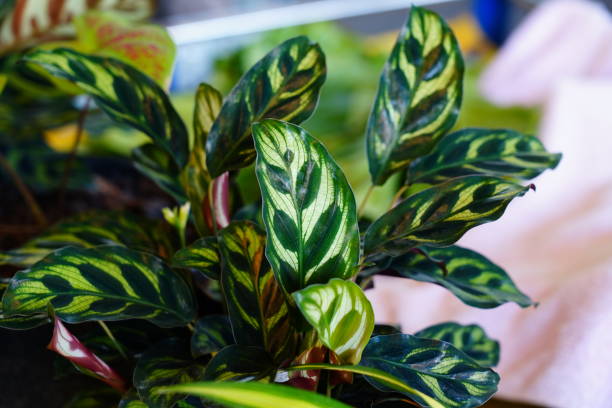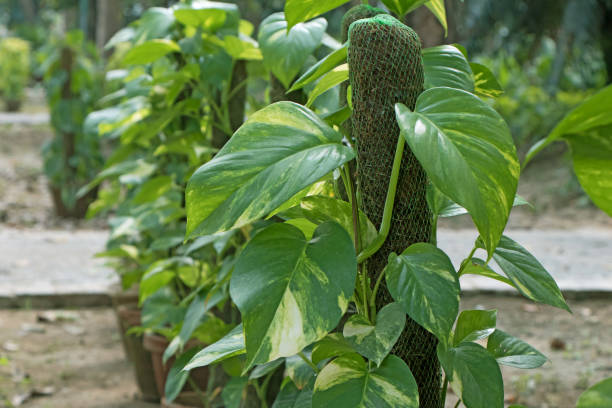Pink Princess Philodendron: The Rare and Beautiful Houseplant that’s Taking the Indoor Plant World by Storm
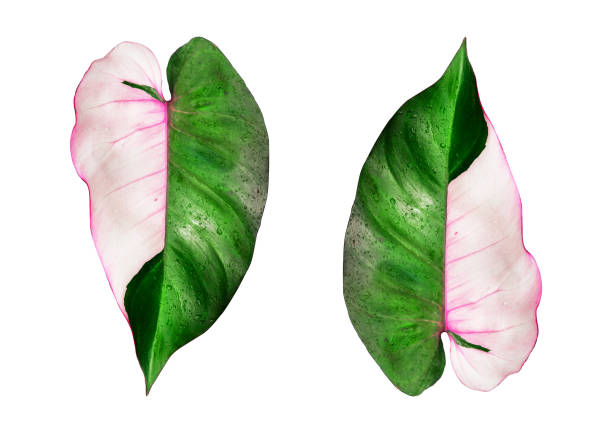
The Pink Princess Philodendron is a stunning indoor plant with distinctive pink and green variegated foliage that has captured the attention of plant enthusiasts worldwide. This rare and highly sought-after plant has become a sensation on social media platforms, and its striking appearance and relatively easy care have made it a must-have for indoor plant lovers. In this article, we will delve into the history, care, propagation, and other aspects of the Pink Princess Philodendron to help you decide if this plant is the right fit for you.
How to Grow and Care for Pink Princess Philodendron?
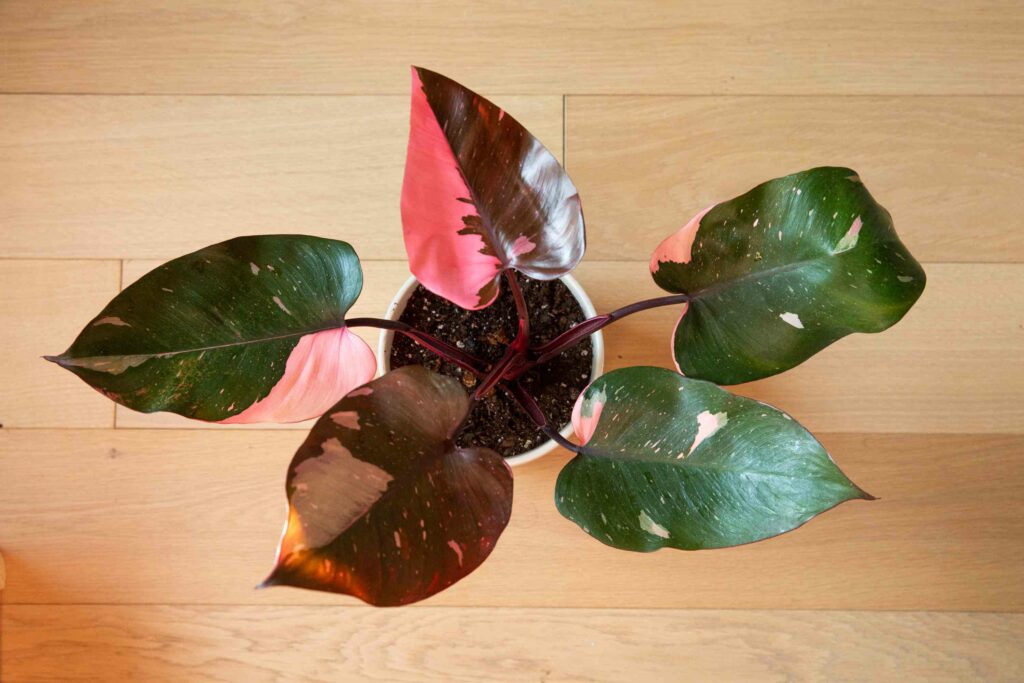
Are you looking for a stunning and unique addition to your plant collection? Look no further than the Pink Princess Philodendron! This plant will make a statement in any space with its unique pink variegation. But how do you care for such a rare and beautiful specimen? In this article, we’ll guide you through everything from planting to propagation so that you can keep your Pink Princess thriving. Let’s start our discussion:
What is a Pink Princess Philodendron?
The Pink Princess Philodendron is a tropical plant that originates from South America. It is pretty pink variegation sets it apart from other philodendrons, making it a popular choice among plant lovers. The leaves of the Pink Princess are heart-shaped and can grow up to 9 inches long, making for an eye-catching display.
This beautiful plant is known by its scientific name, Philodendron erubescens’ Pink Princess. The word “erubescens” means “turning red”, which refers to the pink colouration that develops on the leaves as they mature.
The Pink Princess Philodendron is a relatively low-maintenance plant when given proper care. It prefers bright, indirect light but can tolerate some shade as well. This plant thrives in warm temperatures and high humidity levels, so consider using a humidifier or placing it near a water tray.
One thing to note about the Pink Princess is that it’s toxic if consumed by humans or pets, so be sure to keep it out of reach if you have curious little ones or furry friends around. With proper care, your Pink Princess Philodendron will reward you with its stunning beauty for years.
The Different Types of Pink Princess Philodendrons
Pink Princess Philodendron is a beautiful plant with stunning pink and green variegated leaves. This plant has become incredibly popular among indoor gardeners and collectors. While only one species of Pink Princess Philodendron exists, many different types are available in the market.
Philodendron Erubescens “Pink Congo”
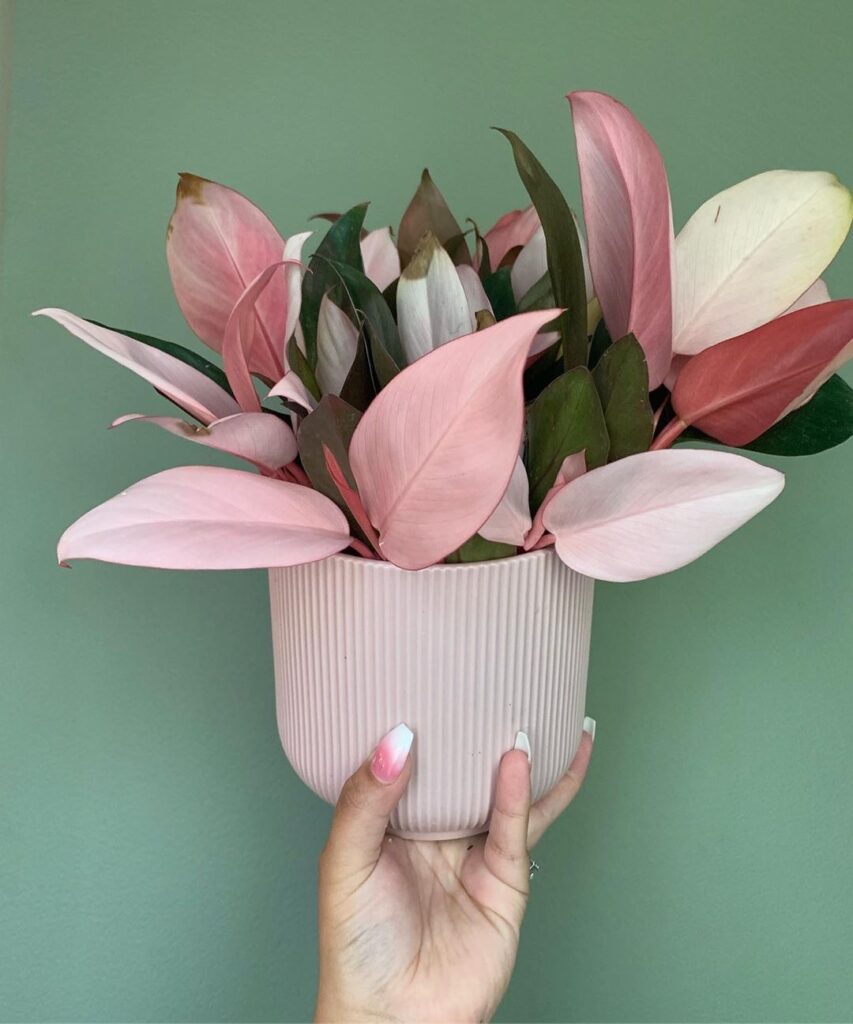
The most common type of Pink Princess Philodendron is the “Pink Congo”. It has large heart-shaped leaves with vibrant pink variegation on top of its dark green foliage. Another variety, “White Knight” has light pink to white variegation, making it unique.
Philodendron Erubescens “Black Cardinal”
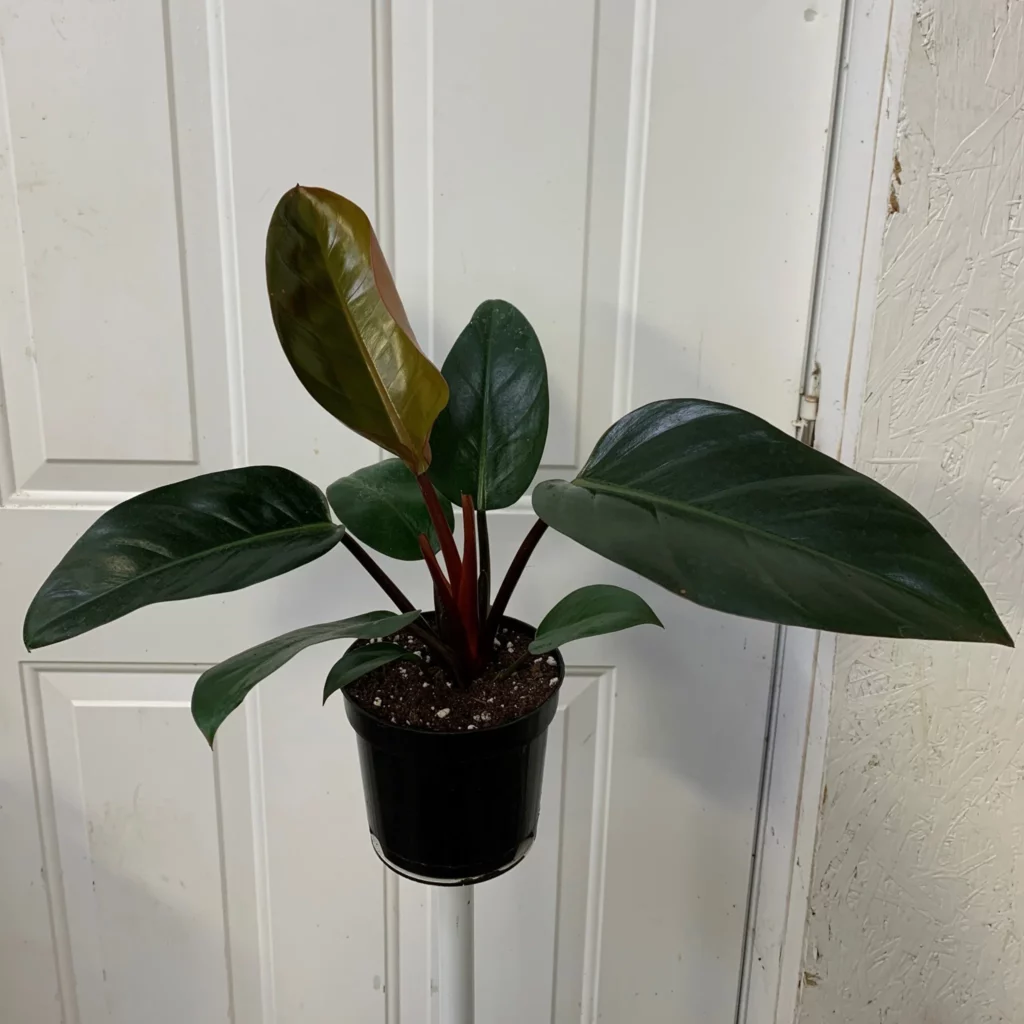
The “Black Cardinal” variety features blackish-green foliage with bright pink veining throughout the leaves, which makes it a striking houseplant. The latest addition to this family is the “Thai Sunrise”. Its new growths emerge in bright yellow and orange shades before maturing into more subdued greens and pinks.
Philodendron Erubescens “Pink Princess”
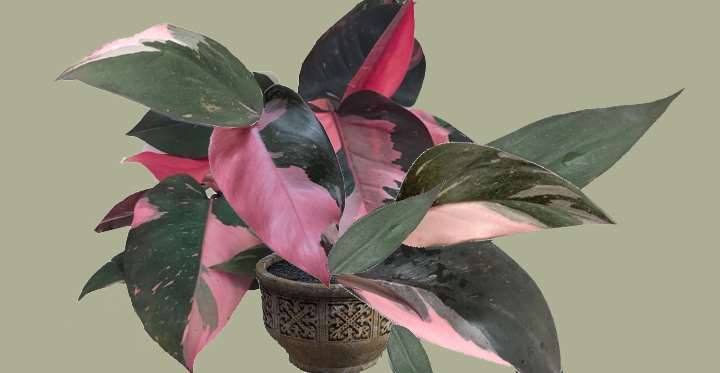
The original and most popular type of Pink Princess Philodendron with green leaves, pink spots, and streaks.
Philodendron Erubescens “White Knight”
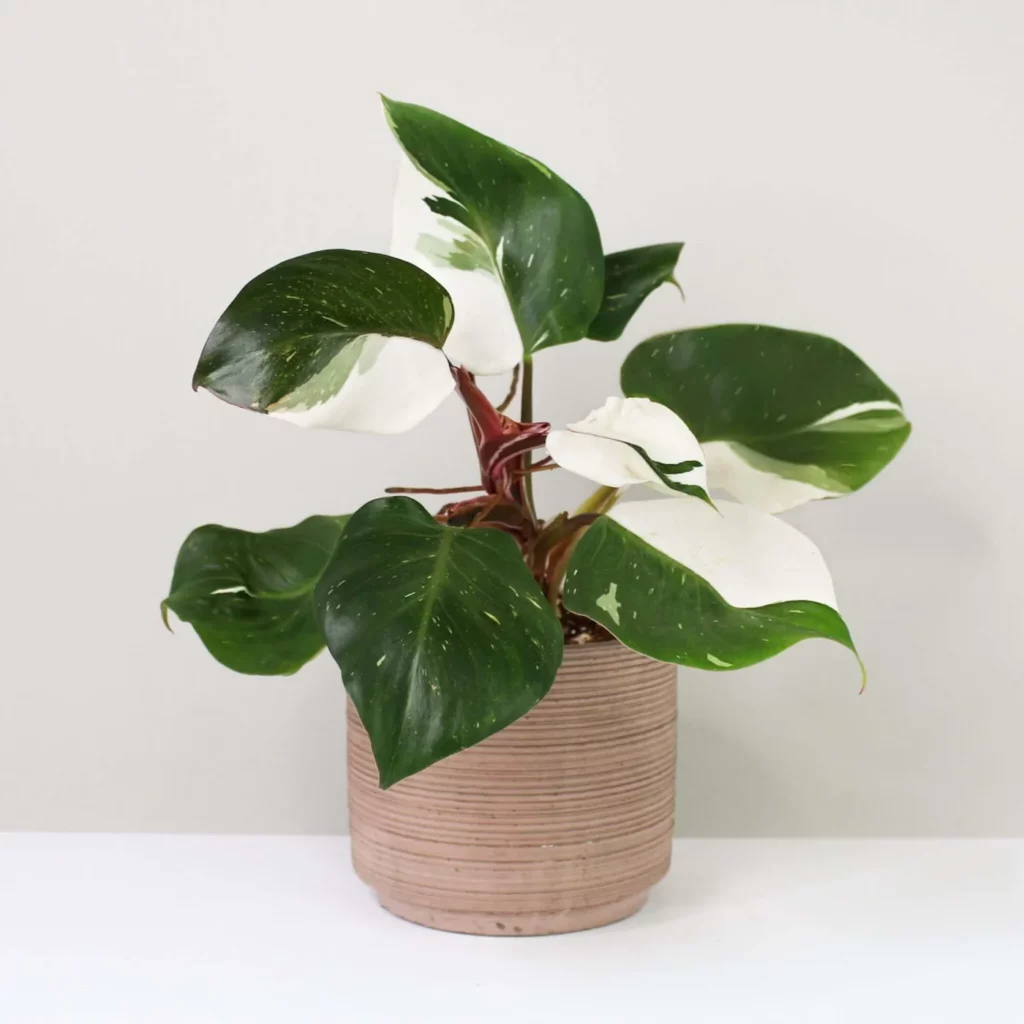
A beautiful and rare cultivar with dark green leaves and bright white variegation.
Philodendron Erubescens “Burgundy Princess”: This cultivar has a darker, more burgundy coloration on its leaves, with contrasting pink variegation.
Philodendron Erubescens “Imperial Red”
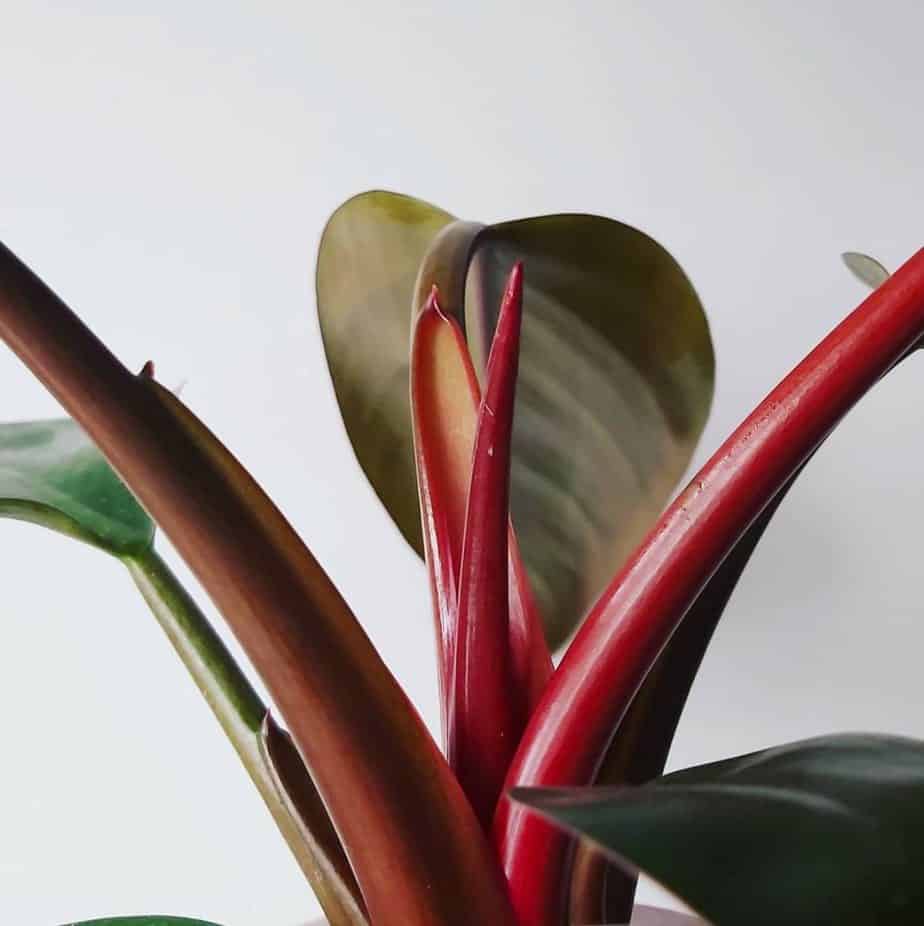
This is a cultivar with deep red stems and green leaves with pink variegation.
Each type of Pink Princess Philodendron requires slightly different care. Research specific guidelines for your chosen kind before planting or purchasing.
Knowing about various types will help you choose what fits best for your preferences when picking out your next Pink Princess Philodendron.
How to Plant a Pink Princess Philodendron?
Planting a Pink Princess Philodendron is an exciting experience for any plant lover. Before getting started, ensure you have the necessary tools and equipment: a pot with drainage holes, a well-draining soil mix, and gloves to protect your hands.
The first step is to choose a suitable location for your Pink Princess Philodendron. It thrives in bright but indirect light, so avoid direct sunlight as it can scorch the leaves.
Next, add enough soil to the pot to cover the drainage holes. Place your Pink Princess Philodendron gently on top of this layer of soil and fill in around it with more soil until its base is level with or slightly above the rim of the pot.
Then lightly wrap around the stem and water thoroughly until excess water drains through the bottom holes. Remember not to let your plant sit in standing water, which can cause root rot.
Place your newly potted Pink Princess Philodendron in its chosen spot. It will receive adequate lighting but not be exposed directly to harsh sunlight or cold drafts from windows or doors.
With these simple steps followed correctly, planting a Pink Princess Philodendron should be easy, even for beginners.
How to Water a Pink Princess Philodendron?
Watering your Pink Princess Philodendron is essential for its growth and overall health. This plant requires moist soil, but it’s important to water it sparingly as this can lead to root rot. Here are some tips on how to water your Pink Princess Philodendron:
Make sure that the pot has proper drainage holes. This will ensure that excess water drains away and doesn’t collect in the bottom of the pot.
When watering your Pink Princess Philodendron, use room temperature water and pour it slowly onto the soil until you see water coming out of the drainage holes. It’s important not to get any water on the leaves as this can cause damage or lead to fungal infections.
To determine when your plant needs watering, stick a finger into the top inch of soil, if it feels dry, it’s time to water again. However, if it still feels moist, wait a few more days before checking again.
In general, during warmer months, you’ll need to water more often than in cooler ones since evaporation rates will be higher. If you need help with how often to water your pink princess philodendron plant, consult an expert or do further research online.
How to Fertilize a Pink Princess Philodendron?
Fertilizing your Pink Princess Philodendron is essential to keep it healthy and thriving. The right fertilizer will provide the necessary nutrients for your plant to grow strong and produce vibrant leaves.
When choosing a fertilizer, look for one high in nitrogen, as this element stimulates leaf growth. A balanced fertilizer with equal parts of nitrogen, phosphorus, and potassium (NPK) can also be used.
Apply the fertilizer every 2-3 months during the growing season (spring and summer). Be careful not to over-fertilize, as this can damage your plant’s roots. Follow the instructions on the tag carefully, as too much fertilizer can result in burnt leaves or small growth.
You can choose between liquid or granular fertilizers, depending on your preference. Liquid fertilizers are easy to use and quickly absorbed by plants. In contrast, granular ones release slowly over time, providing continuous nourishment for your Pink Princess Philodendron.
Remember to water before applying any fertilizer so you don’t accidentally burn its delicate root system. You’ll see beautiful pink variegation on new leaves with proper care through regular fertilization, giving an incredible display of foliage.
How to Prune a Pink Princess Philodendron?
Pruning is essential to caring for your Pink Princess Philodendron, as it helps the plant maintain its healthy appearance. It also ensures that the plant won’t outgrow its pot, which could lead to root rot and other issues.
Check the plant for dead or damaged leaves to prune your Pink Princess Philodendron. These should be removed using clean and sharp scissors or pruning shears. Make sure to cut close to the base of the leaf stem without damaging any nearby stems or nodes.
Next, look for leggy or overgrown stems that take up too much space in your pot. You can trim these back by cutting them just above a node (a small bump on the stem where new growth will emerge). This will encourage new branches to grow below the cut, making your plant fuller and more compact.
If you want your Pink Princess Philodendron to climb up a trellis or moss pole, you can train it by gently tying its tendrils onto support structures as they grow. This will help create a beautiful display while keeping your plant tidy and well-maintained.
Always use clean tools when pruning, and never remove more than one-third of the foliage at once. Your Pink Princess Philodendron will thrive for years with proper care and attention.
Pests and Diseases of the Pink Princess Philodendron?
Like any other houseplant, the Pink Princess Philodendron is not immune to pests and diseases. It is essential to keep an eye on your plant regularly to identify any problems before they become severe.
One of the most common issues that may affect your Pink Princess Philodendron is spider mites. These tiny pests can be hard to spot with the naked eye but will leave small webs on the plant’s leaves. Spider mites damage plants by sucking sap, causing yellowing leaves and stunted growth. To get rid of them, wipe down your plant with a damp cloth or use insecticidal soap.
Another pest that may invade your Pink Princess Philodendron is mealybugs. These white bugs hide in crevices and under leaves while feeding off your plant’s juices. They cause wilting, yellowing leaves and distorted growth patterns. Use a cotton swab dipped in rubbing alcohol or neem oil spray to remove these pests from your plant.
Regarding diseases, root rot is one of the most problematic ones for Pink Princess Philodendrons. Overwatering can cause the roots to become waterlogged, leading them to no longer be able to absorb nutrients properly, resulting in death if left untreated promptly.
To prevent this problem from occurring altogether, ensure you provide well-draining soil for planting by mixing perlite/vermiculite into potting soil, thus allowing excess water drainage.
It’s important to always inspect new plants before bringing them home to prevent introducing unwanted diseases/problems into our gardens/home environments.
Propagating Pink Princess Philodendron
Propagating Pink Princess Philodendron is a great way to share the beauty of this plant with others. There are two methods for propagating: stem cuttings and division.
Look for a healthy leaf node on your Pink Princess Philodendron to propagate using stem cuttings. Cut right below the node, ensuring you have at least one or two leaves attached to the cutting. Then, dip the end into the rooting hormone and place it in soil or water until roots form.
For propagation by division, carefully remove your plant from its pot and separate any visible root clusters with clean scissors or garden shears. Replant each section in a new container filled with fresh potting mix.
Remember that while propagating can be rewarding, it’s important not to overdo it, as too much stress can harm your parent plant. Happy propagating.
Common Problems With Pink Princess Philodendron
Growing and caring for a Pink Princess Philodendron is not without its challenges. Here are some common problems you might encounter while looking after your plant:
One issue is overwatering, which can lead to root rot and ultimately kill the plant. To avoid this, make sure the soil has good drainage and only water when the top inch of the soil feels dry.
Another problem is pests such as spider mites or mealybugs. These can be treated with insecticidal soap or neem oil.
Yellow leaves could indicate too much or too little water, so check the soil moisture levels before adjusting your watering schedule.
If your Pink Princess Philodendron isn’t producing new growth or looks unhealthy overall, it may need more light or nutrients in its soil. Try moving it closer to a window with bright but indirect sunlight and fertilizing it every couple of months during the growing season.
With proper care and attention to these potential issues, you’ll enjoy a healthy and vibrant Pink Princess Philodendron that adds beauty to any space in no time.
Some FAQs
Q: Why is philodendron pink Princess so expensive?
A: The philodendron pink Princess is a rare plant with limited availability, and its unique pink variegation makes it highly sought after by collectors, driving up its price.
Q: Is philodendron pink Princess hard to care for?
A: The pink Princess philodendron is generally easy to care for and can flourish in a range of lighting conditions. However, it is important to avoid overwatering and ensure that the soil is well-draining.
Q: How do I make my pink Princess Philodendron pink?
A: The pink coloration on a pink Princess philodendron is a result of a genetic mutation, so it cannot be induced or increased through any external means.
Q: How much should I pay for pink Princess Philodendron?
A: The price of a pink Princess philodendron can vary widely depending on factors such as availability and size, but it is not strange for them to sell for hundreds or even thousands of dollars.
Q: Which philodendron is expensive?
A: The philodendron pink Princess is one of the most expensive philodendrons due to its rarity and high demand among plant collectors.
Q: Why is a philodendron so expensive?
A: Some philodendrons, such as the pink Princess, are rare and difficult to propagate, which drives up their price. Also, the current popularity of indoor plants has increased demand and prices.
Q: Is philodendron a lucky plant?
A: In many cultures, the philodendron is considered a symbol of prosperity, abundance, and good luck, making it a popular choice for indoor decoration.
Conclusion
The pink Princess philodendron is a highly coveted plant among collectors due to its unique variegation, which can fetch a high price tag. While it may require some care and attention, it is generally an easy plant to care for, making it a popular choice for indoor plant lovers. However, its rarity and cost mean that it may not be accessible to everyone.
Read More: Pink Princess Philodendron: The Rare and Beautiful Houseplant that’s Taking the Indoor Plant World by StormRelated Articles
- Carnation Flower: Plant Care and Growing Guide
- How to Grow and Care for the Cast Iron Plant?
- Spider Lily: A Guide to Growing and Caring for this Stunning Flower
- How to Grow and Care for Pussy Willows
- Zebra Plant Care: Growing Aphelandra Squarrosa At Home
- 8 Prosperous Types of Money Plants in Feng Shui to Bring Wealth and Abundance
- A Comprehensive Guide on Growing and Caring for Majesty Palm
- How to Grow and Care for Baby’s Breath?
- Rhododendron Plant: Rhododendron Care In Your Garden
- Iris Flower – All You Want To Know About Them
- Best Plants for Balcony to Locate Bloom to Your Home
- Full Guide On How To Make A Raised Garden Bed At Home
- How to Take Care of An Aloe Vera Plant – Tips to Grow and Take Care
- A Pool of Various Types of Aloe Plants
- Best DIY Upcycled Garden Ideas





